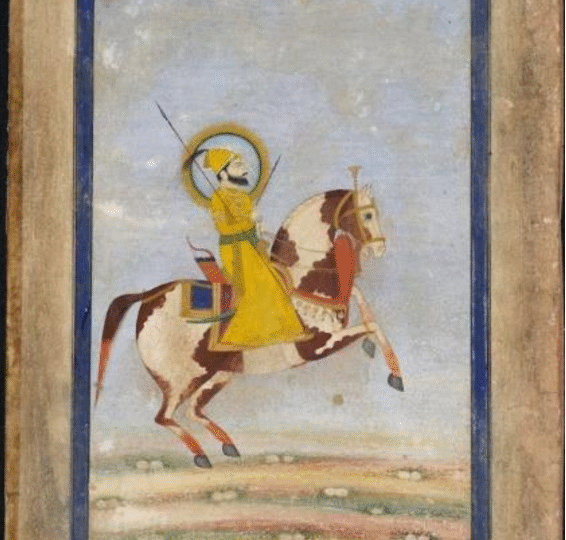Guru Gobind Singh Ji

Tenth and Final Human Guru of Sikhism
Guru Gobind Singh Ji (Gurmukhi: ਗੁਰੂ ਗੋਬਿੰਦ ਸਿੰਘ ਜੀ) was the tenth and last human Guru of Sikhism, born on 22 December 1666 in Patna Sahib (modern-day Bihar, India) to Guru Tegh Bahadur Ji and Mata Gujri Ji. Named Gobind Rai at birth, he was destined to lead the Sikhs during one of the most turbulent periods in their history and to bring a transformative vision that shaped Sikh identity permanently.
Early Life and Education
Gobind Rai spent his early years in Patna, where he was educated in Persian, Sanskrit, Punjabi, as well as archery, horse-riding, and martial arts. After his father’s martyrdom in 1675 at the hands of Mughal Emperor Aurangzeb for defending religious freedom, Gobind Rai was formally installed as Guru Gobind Singh at Anandpur Sahib at the age of nine.
Founding of the Khalsa (1699)
Guru Gobind Singh’s most revolutionary act was the establishment of the Khalsa Panth on 13 April 1699 at Anandpur Sahib, on the day of Vaisakhi. He called upon his followers to step forward and offer their heads for the cause of righteousness. From among them, he chose five devoted Sikhs—the Panj Pyare (Five Beloved Ones)—and initiated them into the Khalsa, a spiritual brotherhood devoted to justice, equality, and fearlessness.
He gave the Khalsa a distinct identity—unshorn hair (Kes), wooden comb (Kangha), iron bracelet (Kara), cotton undergarment (Kachera), and ceremonial sword (Kirpan)—now known as the Five Ks. He also took amrit (baptism) from the Panj Pyare himself, thus equalizing Guru and disciple, and transformed the community into saint-soldiers.
Military Campaigns and Resistance
Guru Gobind Singh was not only a spiritual leader but also a military commander who led several battles to defend religious freedom and the Sikh community against the Mughals and local hill rulers. Despite facing betrayals and overwhelming odds, he never waged war for personal gain and always stood for dharma (righteousness).
His defense of justice led to numerous sacrifices. All four of his sons, known as the Sahibzade, died as martyrs—two in battle and two executed by the Mughals for refusing to convert to Islam. Despite these losses, Guru Gobind Singh remained steadfast, urging his followers to stand tall in the face of tyranny.
Literary and Spiritual Contributions
Guru Gobind Singh was also a prolific poet and scholar. He composed many spiritual and philosophical works, including the Jaap Sahib, Akal Ustat, and parts of the Dasam Granth. His writings emphasized divine justice, courage, humility, and devotion to One God.
He carried forward the teachings of earlier Gurus while instilling a warrior spirit in the Sikhs. His writings blend Bhakti (devotion) with Shakti (power), calling upon Sikhs to be both meditative and martial.
Guru Granth Sahib as Eternal Guru
Before his death in 1708, Guru Gobind Singh made a monumental decision: he ended the line of human Gurus and declared the Guru Granth Sahib—the Sikh holy scripture—as the eternal Guru of the Sikhs. This ensured that the spiritual authority of Sikhism rested forever in the scripture, preventing corruption or political manipulation.
Martyrdom and Death
Guru Gobind Singh was assassinated on 7 October 1708 in Nanded (Maharashtra) by a Mughal-affiliated assailant. Though wounded earlier in battle and treated for his injuries, the Guru was stabbed by a Pashtun assassin sent by Mughal forces. He died soon after, at the age of 41.
Legacy
Guru Gobind Singh’s legacy is one of courage, sacrifice, spiritual leadership, and transformation. He reshaped Sikhism into a distinct, disciplined, and fearless community. Through the Khalsa, he gave the Sikhs a uniform identity, and through the Guru Granth Sahib, he gave them eternal guidance.
To this day, Guru Gobind Singh is remembered not just as a warrior and poet, but as a visionary who secured the dignity, faith, and future of Sikhs with unmatched resilience and divine wisdom.

